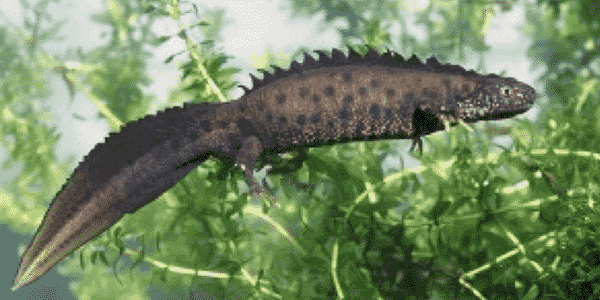
Visit our other sites
-
Fapas - Proficiency Testing
Globally recognised provider of proficiency tests, running over 400 tests annually across an extensive range of matrices and analytes
-
Great Crested Newts Testing
A single sample taken by an ecologist at any time during the newt breeding season can determine their presence or absence, saving you time and money
Moray investigates plant diseases using a diverse range of environmental data which in turn require a diverse skill set.


-
Area of expertise
Crop Protection & Sustainable Agriculture
-
Years of experience
25+
-
Highest qualification
PhD
Moray doesn’t see plant disease as an isolated phenomenon but as the natural consequence of the environment that we use to grow food crops. That environment is subjected to influences that maybe beyond our direct control and ability to quantify. Rather than dwell of the difficulties he involves complex datasets particularly around weather conditions and how diseases develop spatially and temporally in the farmed landscape.
Moray has produced a novel forecasting scheme for late blight disease of potato and is currently working with the Crop Health and Protection Centre to bring a state of the art information system to growers which will quantify the risk from a large range of pest and diseases across the UK.
In addition to his work in epidemiology Moray has published work with collaborators on the use of computer vision and machine learning to aid quantification of plant disease symptoms in wheat crops.
More about crop health services
Fera offers a suite of crop health services, resources, testing facilities and expertise to help farmers, growers and the food industry to improve yields, reduce costs and develop sustainable solutions.
Latest Papers and Articles
Han L, Haleem MS, Taylor M, 2016. Automatic detection and severity assessment of crop diseases using image pattern recognition. In: Chen L, Kapoor S, Bhatia R, eds. Extended and Selected Results from the Science and Information Conference 2015. Springer International Publishing, 283-300.
Taylor MC, Pietravalle S, Daniels A, Flind A, Turner JA. Exploring the factors influencing epidemic development of Septoria tritici in winter wheat and success of current control strategies. In: Carlton R, Mohammed S, Storkey J, Topp K, West J, eds. Proceedings of the Aspects of Applied Biology 125, Agronomic decision making in an uncertain climate, 2014. Wellesbourne: Association of Applied Biologists, 89-94.
Brittain I, Selby K, Taylor M, Mumford R, 2013. Detection of plant pathogen spores of economic significance on pollen trap slides. Journal of Phytopathology 161, 855-8.
Cooke DEL, Cano LM, Raffaele S, Bain RA, Cooke LR, Etherington GJ, et al., 2012 Genome Analyses of an Aggressive and Invasive Lineage of the Irish Potato Famine Pathogen. PLoS Pathog 8(10): e1002940. https://doi.org/10.1371/journal.ppat.1002940
Taylor MC. Wheat disease risk forecasts by CropMonitor®: in-season updates and risk forecasts via the web and mobile devices. In: Orson J, ed. Proceedings of the Aspects Of Applied Biology 117, Crop Protection in Southern Britain, 2012. Wellesbourne: Association of Applied Biologists, 127-33.
Luo W, Taylor MC, Parker SR, 2008. A comparison of spatial interpolation methods to estimate continuous wind speed surfaces using irregularly distributed data from England and Wales. International Journal Of Climatology 28, 947-59.
Gladders P, Langton SD, Barrie IA, Hardwick NV, Taylor MC, Paveley ND, 2007. The importance of weather and agronomic factors for the overwinter survival of yellow rust (Puccinia striiformis) and subsequent disease risk in commercial wheat crops in England. Annals of Applied Biology 150, 371-82.

Moray and their team work with customers to deliver the following services within Fera...

Soil Health Unit
Health tests, organism monitoring and metal detection for your soil, amongst other services
Latest Papers and Articles
Han L, Haleem MS, Taylor M, 2016. Automatic detection and severity assessment of crop diseases using image pattern recognition. In: Chen L, Kapoor S, Bhatia R, eds. Extended and Selected Results from the Science and Information Conference 2015. Springer International Publishing, 283-300.
Taylor MC, Pietravalle S, Daniels A, Flind A, Turner JA. Exploring the factors influencing epidemic development of Septoria tritici in winter wheat and success of current control strategies. In: Carlton R, Mohammed S, Storkey J, Topp K, West J, eds. Proceedings of the Aspects of Applied Biology 125, Agronomic decision making in an uncertain climate, 2014. Wellesbourne: Association of Applied Biologists, 89-94.
Brittain I, Selby K, Taylor M, Mumford R, 2013. Detection of plant pathogen spores of economic significance on pollen trap slides. Journal of Phytopathology 161, 855-8.
Cooke DEL, Cano LM, Raffaele S, Bain RA, Cooke LR, Etherington GJ, et al., 2012 Genome Analyses of an Aggressive and Invasive Lineage of the Irish Potato Famine Pathogen. PLoS Pathog 8(10): e1002940. https://doi.org/10.1371/journal.ppat.1002940
Taylor MC. Wheat disease risk forecasts by CropMonitor®: in-season updates and risk forecasts via the web and mobile devices. In: Orson J, ed. Proceedings of the Aspects Of Applied Biology 117, Crop Protection in Southern Britain, 2012. Wellesbourne: Association of Applied Biologists, 127-33.
Luo W, Taylor MC, Parker SR, 2008. A comparison of spatial interpolation methods to estimate continuous wind speed surfaces using irregularly distributed data from England and Wales. International Journal Of Climatology 28, 947-59.
Gladders P, Langton SD, Barrie IA, Hardwick NV, Taylor MC, Paveley ND, 2007. The importance of weather and agronomic factors for the overwinter survival of yellow rust (Puccinia striiformis) and subsequent disease risk in commercial wheat crops in England. Annals of Applied Biology 150, 371-82.

Moray and their team work with customers to deliver the following services within Fera...

Soil Health Unit
Health tests, organism monitoring and metal detection for your soil, amongst other services

Copyright © 2025 Fera Science Limited (“Fera”). All rights reserved.
For further information about how Fera uses any personal data collected from you, please see our Privacy Notice at www.fera.co.uk/privacy-policy.



